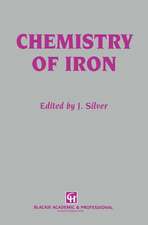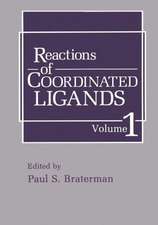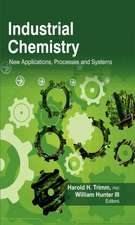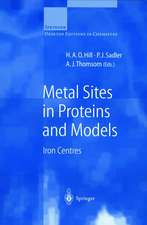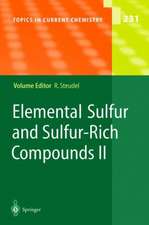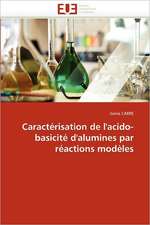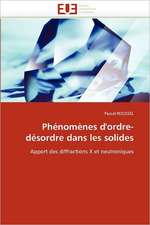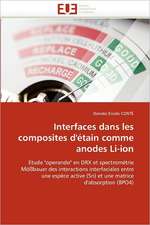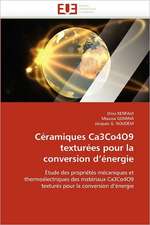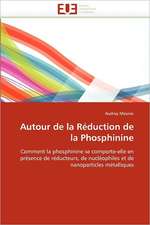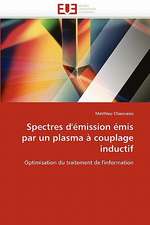The Chemistry and Biology of Nitroxyl (HNO)
Editat de Fabio Doctorovich, Patrick J. Farmer, Marcelo A. Martien Limba Engleză Hardback – 4 sep 2016
This useful resource provides the scientific basis to understand the chemistry, biology, and technical aspects needed to deal with HNO. Building on two decades of nitric oxide and nitroxyl research, the editors and authors have created an indispensable guide for investigators across a wide variety of areas of chemistry (inorganic, organic, organometallic, biochemistry, physical, and analytical); biology (molecular, cellular, physiological, and enzymology); pharmacy; and medicine.
This book begins by exploring the unique molecule’s structure and reactivity, including important reactions with small molecules, thiols, porphyrins, and key proteins, before discussing chemical and biological sources of nitroxyl. Advanced chapters discuss methods for both trapping and detecting nitroxyl by spectroscopy, electrochemistry, and fluorescent inorganic cellular probing.
Expanding on the compound’s foundational chemistry, this book then explores its molecular physiology to offer insight into its biological implications, pharmacological effects, and practical issues.
- Presents the first book on HNO (nitroxyl or azanone), an increasingly important molecule in biochemistry and pharmaceutical research
- Provides a valuable coverage of HNO’s chemical structure and significant reactions, including practical guidance on working with this highly reactive molecule
- Contains high quality content from recognized experts in both industry and academia
Preț: 807.78 lei
Preț vechi: 887.67 lei
-9% Nou
Puncte Express: 1212
Preț estimativ în valută:
154.57€ • 161.79$ • 128.65£
154.57€ • 161.79$ • 128.65£
Carte tipărită la comandă
Livrare economică 24 martie-07 aprilie
Preluare comenzi: 021 569.72.76
Specificații
ISBN-13: 9780128009345
ISBN-10: 0128009349
Pagini: 424
Dimensiuni: 152 x 229 x 27 mm
Greutate: 0.79 kg
Editura: ELSEVIER SCIENCE
ISBN-10: 0128009349
Pagini: 424
Dimensiuni: 152 x 229 x 27 mm
Greutate: 0.79 kg
Editura: ELSEVIER SCIENCE
Public țintă
Researchers, particularly chemists in academia and industry; secondary markets within Biochemistry, Biology, and PharmaceuticsCuprins
1. HNO: Redox Chemistry and Interactions With Small Inorganic Molecules
2. HNO Donors: Angeli’s Salt and Related Diazeniumdiolates
3. Hydroxylamines With Organic-Based Leaving Groups as HNO Donors
4. Mechanistic Aspects of HNO Production from Hydroxylamine and Derivatives
5. HNO Generation From NO, Nitrite, Inorganic or Organic Nitrosyls, and Crosstalk With H2S
6. HNO–Thiol Relationship
7. Non-Heme Transition Metal Complexes of HNO
8. The Interaction of HNO With Transition Metal Centers and Its Biological Significance. Insight Into Electronic Structure From Theoretical Calculations
9. Interactions of HNO With Metallated Porphyrins, Corroles, and Corrines
10. Fluorescent Probes for HNO Detection
11. Phosphine-Based HNO Detection
12. Electrochemical Detection of Azanone
13. Detection of HNO by Membrane Inlet Mass Spectrometry
14. Spectroscopic NMR Characterizations of HNO Adducts of Ferrous Heme Proteins
15. Global Kinetic Analysis and Singular Value Decomposition Methods Applied to Complex Multicomponent Reactions of HNO
16. HNO as an Oxygen Substitute in Enzymes
17. The Reactions of HNO With Nonheme Proteins: An Emphasis on Thiol-Containing Proteins
18. Is Azanone Endogenously Produced in Mammals?
19. From Heaven to Heart: Nitroxyl (HNO) in the Cardiovascular System and Beyond
2. HNO Donors: Angeli’s Salt and Related Diazeniumdiolates
3. Hydroxylamines With Organic-Based Leaving Groups as HNO Donors
4. Mechanistic Aspects of HNO Production from Hydroxylamine and Derivatives
5. HNO Generation From NO, Nitrite, Inorganic or Organic Nitrosyls, and Crosstalk With H2S
6. HNO–Thiol Relationship
7. Non-Heme Transition Metal Complexes of HNO
8. The Interaction of HNO With Transition Metal Centers and Its Biological Significance. Insight Into Electronic Structure From Theoretical Calculations
9. Interactions of HNO With Metallated Porphyrins, Corroles, and Corrines
10. Fluorescent Probes for HNO Detection
11. Phosphine-Based HNO Detection
12. Electrochemical Detection of Azanone
13. Detection of HNO by Membrane Inlet Mass Spectrometry
14. Spectroscopic NMR Characterizations of HNO Adducts of Ferrous Heme Proteins
15. Global Kinetic Analysis and Singular Value Decomposition Methods Applied to Complex Multicomponent Reactions of HNO
16. HNO as an Oxygen Substitute in Enzymes
17. The Reactions of HNO With Nonheme Proteins: An Emphasis on Thiol-Containing Proteins
18. Is Azanone Endogenously Produced in Mammals?
19. From Heaven to Heart: Nitroxyl (HNO) in the Cardiovascular System and Beyond


